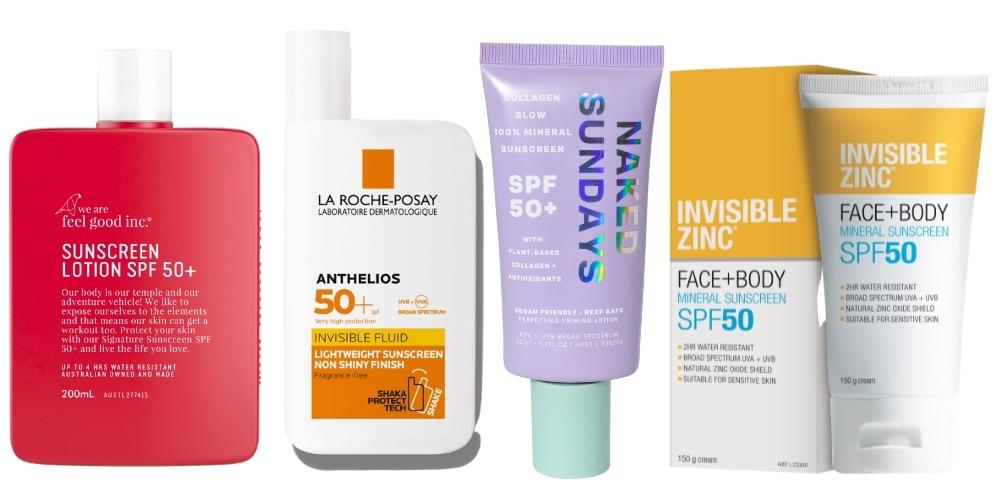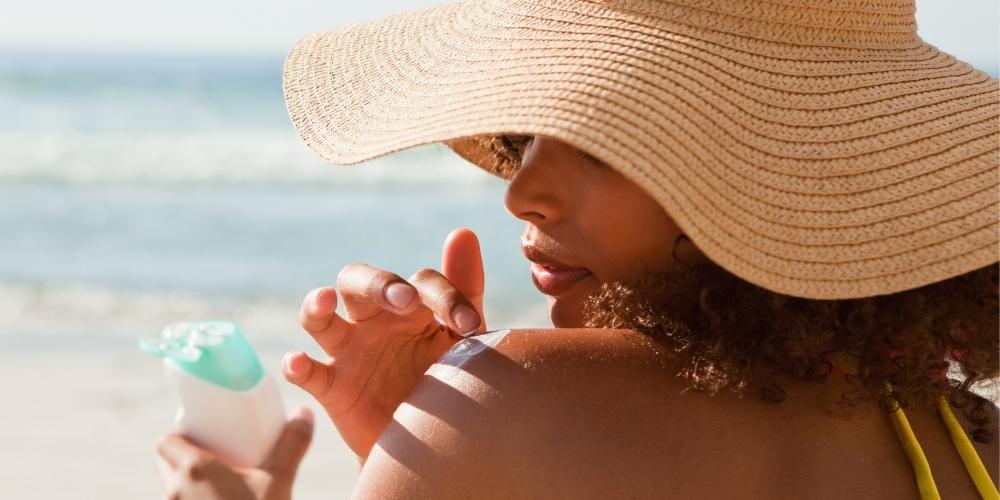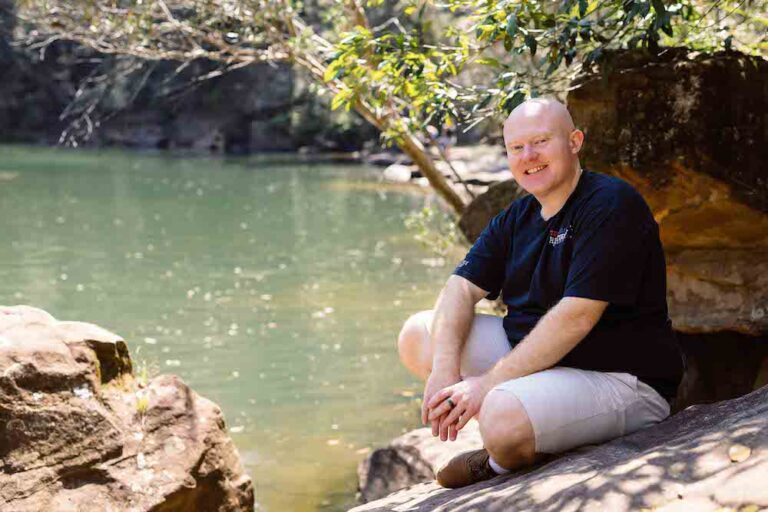Sun protection is still the smartest future-proofing choice for your skin. Thanks to new innovations, sunscreen is well on its way to becoming desirable, rather than something to simply endure. However choosing one can be tricky.
You may have heard sunscreen being described as chemical or mineral in type. This refers to the type of ingredients or filters used to protect your skin.
The experts we spoke to were unanimous about the fact that as long as it is TGA-approved formulation (see below), a sunscreen that you will wear, is the best formula.
“The most important point is to wear sunscreen every day,” advises Dr Scott McGregor, skin cancer and cosmetic physician and co-founder of Australian SPF and skincare brand We Are Feel Good Inc. “Then, the overriding concern should be to find a sunscreen that you feel good about wearing every day. It needs to look good, feel good and suit your skin and your lifestyle. “
Dr McGregor advises to buy SPF 50 if possible and always go for a broad spectrum product.
“Chemical sunscreens are widely used to make broad spectrum sunscreens – that is, using a combination of filters to block both UVA and UVB rays,” he explains.
“They are technically considered ‘organic’, as the UV filters used are organic chemicals (substances that contain carbon). Physical – also known as mineral – sunscreens generally use zinc oxide as their UV filter. Zinc oxide is an excellent broad spectrum filter, covering almost the full range of UVA and UVB, but not to the same extent as a well formulated ‘chemical sunscreen’ using multiple filters. Think of using zinc as using a sheet rather than a blanket to protect from the cold, both cover the whole body, but one gives more complete protection.”
Texture differences between chemical or physical SPF
Founder of popular new sunscreen brand Naked Sundays, Samantha Brett also created both types in her range to provide consumers options, but offers an alternative explanation from a usability perspective.
“Chemical sunscreens are beautiful and thin and glowy and feel beautiful and sink into your skin and they are made with chemical sunscreen filters, all of which are TGA approved and rigorously tested and used in almost every sunscreen around the world,” she says.
“The reason I wanted to do mineral as well, is because it’s really effective for sensitive skin and eyes, so any kind of redness or breakouts or rosacea or pigmentation – mineral is your best friend.”
She says the challenge is to make an appealing mineral option from notoriously thick and white zinc oxide, one her lightly tinted and easily spreadable mineral SPF, along with an increasing number of others landing on the market, appear to have overcome.

Chemical sunscreen options: We Are Feel Good Inc Signature Sunscreen Lotion SPF50+; La Roche-Posay Anthelios Invisible Fluid Facial Sunscreen SPF 50+; Mineral sunscreen options: Naked Sundays SPF50+ Collagen Glow 100% Mineral Perfecting Priming Lotion; Invisible Zinc Face + Body Sunscreen SPF50;
Ingredient concerns
Globally, there are a number of ongoing discussions around the impact of a handful of SPF ingredients on both human health and that of the environment. For both issues more research is being undertaken but among some experts there is concern in the meantime these issues have the potential to detract from the known and established risk of skin cancer and how to minimise that risk.
Although in Australia (and to an extent New Zealand, see below) we use SPF governed by TGA rules – arguably some of the strictest in the world – in the USA the FDA has recently undertaken a review of their requirements necessary for over the counter drugs to be deemed safe. As part of that, it has now asked the sunscreen industry to provide additional safety data on 12 common chemical sunscreen ingredients, including oxybenzone, avobenzone, homosalate, octinoxate, octisalate and octocrylene. Though it has not suggested these previously approved ingredients are unsafe, it has asked for more data to prove they are not. In addition, a voluntary recall by some US SPF brands to investigate potential contamination of a chemical called benzene, which has also been found in many other items like soft drinks and hand sanitizer, has also made headlines. Both topics have prompted concerns to bubble up amongst consumers.
“This is certainly a hot topic at present, confirms Dr McGregor. This is where it gets very confusing and perhaps controversial for consumers.
“Safe” is not something that should be decided by Instagram influencers, we should follow the advice of actual scientific research and worldwide leading scientific bodies. If you are buying a sunscreen with a TGA licence number, it is safe. Every ingredient that goes into a sunscreen is reviewed regularly by the TGA. We will not use any ingredient that has science-based evidence of being unsafe or environmentally damaging.”
Sunscreen standards
Australia and New Zealand have a shared Sunscreen Standard – AS/NZS 2604:2021 – which specifies testing methods and labelling requirements, intended to ensure sunscreen’s efficacy to at least the SPF listed on packaging. However, compliance with the standard, while mandatory in Australia, is currently voluntary in New Zealand, meaning there is no requirement for NZ sunscreen manufacturers to regularly test their products, or even test them at all. A bill currently before parliament, if passed, will ensure this becomes mandatory. In Australia all SPFs categorised as therapeutic, i.e. sun protection as their primary intention, are regulated by the TGA and as such will display an Aust-L number on their packaging.







